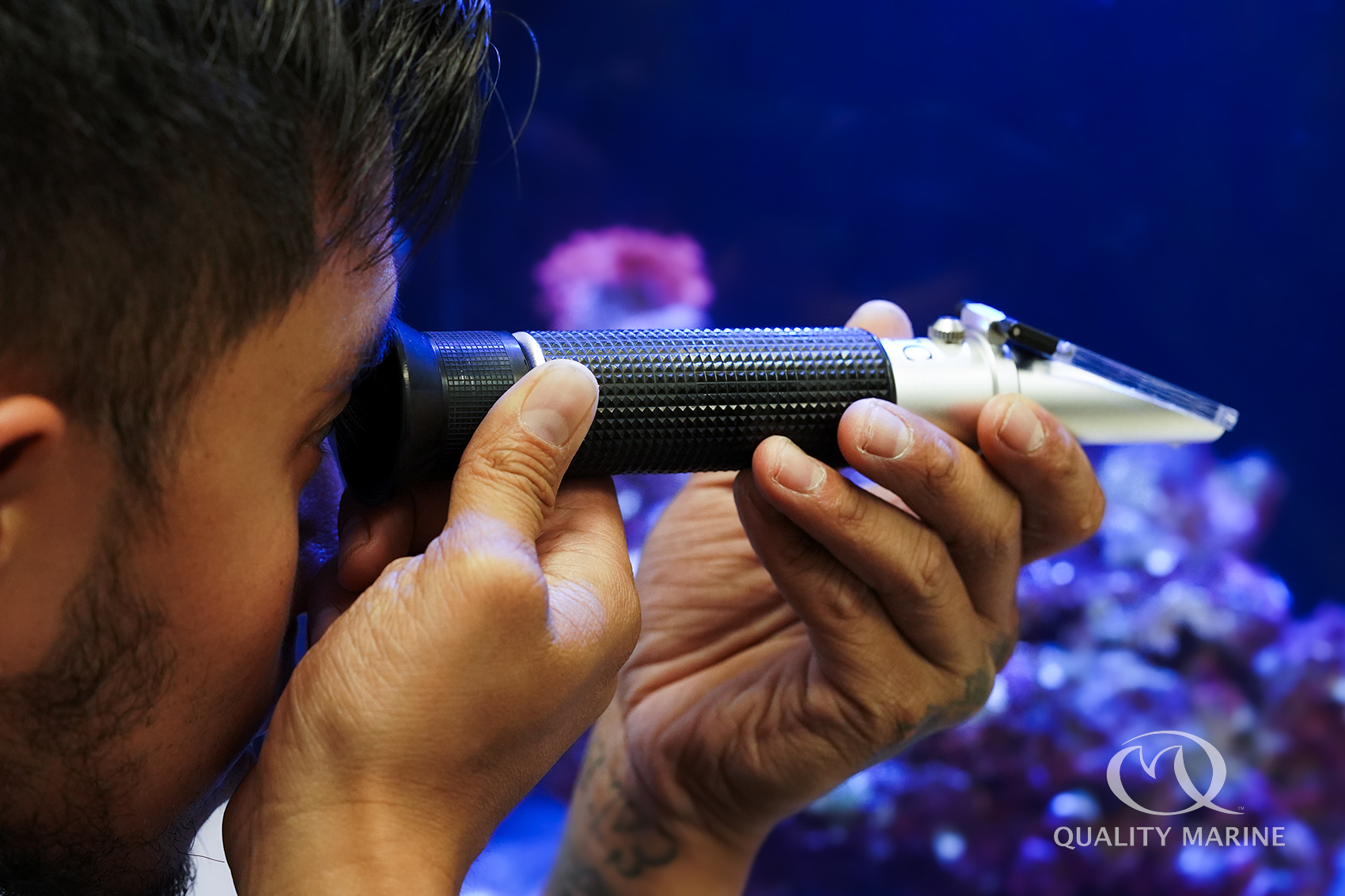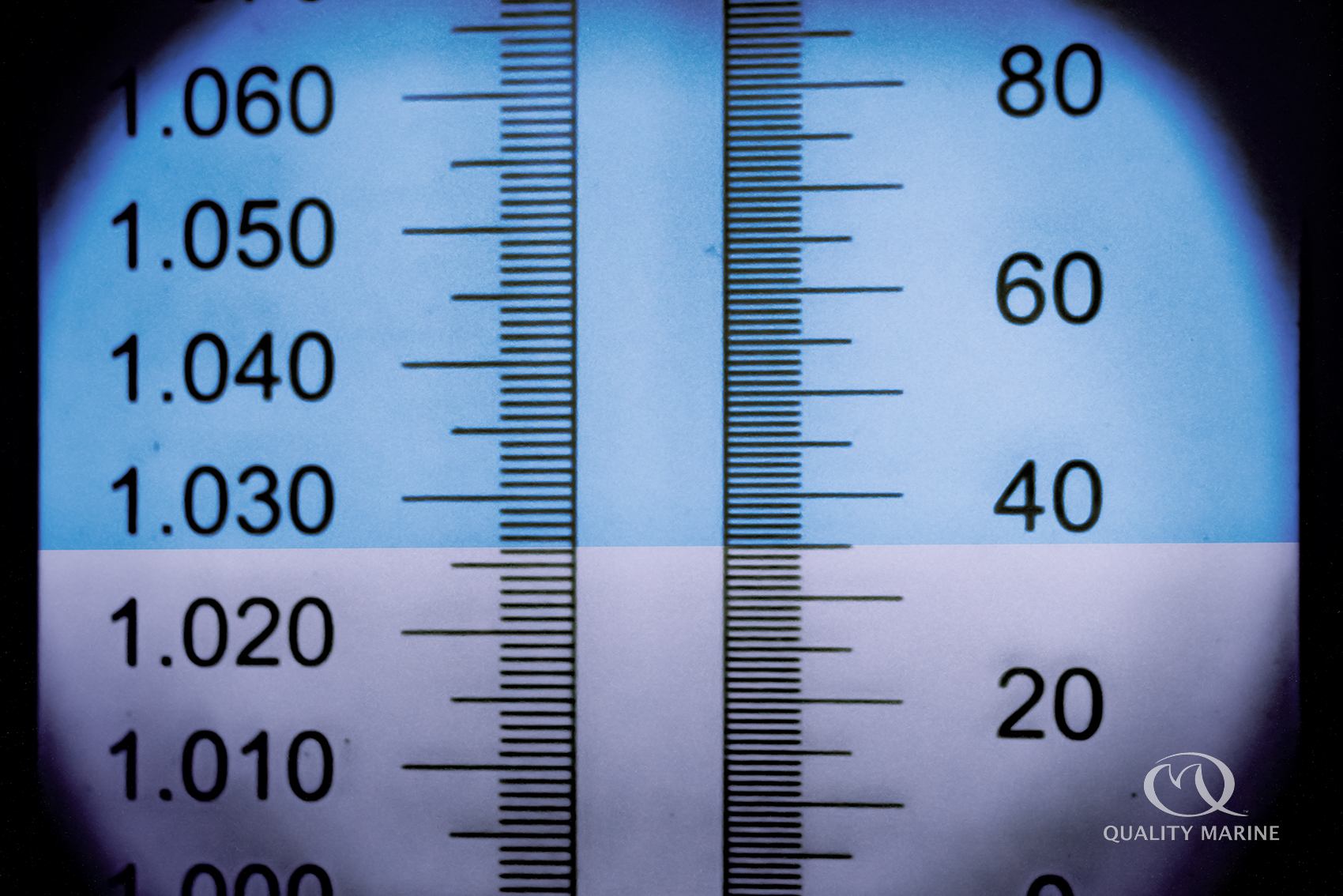Temperature and Salinity - Testing Pt. 1

We as aquarists talk frequently about water parameters. For people new to aquarium keeping, what does this actually mean? What are water parameters? How do you know? Let's start from the beginning.
The two most critical water parameters for any marine (saltwater) aquarium are temperature and salinity (for our purposes this basically means “saltiness”). These two are also the causes of the vast majority of disasters for hobbyists.
Salinity can change dramatically if you don't wait for salt to be thoroughly dissolved before adding it to your aquarium, or if you don't pay adequate attention to replacing evaporated water in the tank. Salinity swings are often fatal if large enough, and causes stress even in smaller fluctuations. There are two good ways to measure salinity, and one is called a hydrometer. These are easily used and while not hyper accurate, they are certainly accurate enough to successfully keep the vast majority of things from your Local Fish Store. When hydrometers fail it is usually a result of being dirty, or occasionally from being damaged, dropped etc. The ways to prevent this are to always rinse it thoroughly with freshwater after using it, and be careful with it. The other tool for measuring salinity is called a refractometer. These are between 5 and 25 times more expensive and much more fragile, but also vastly more accurate. They work by measuring the degree that light shifts when passing through a thin film of liquid. This measurement changes by known degrees based on the amount of dissolved salt in solution. When, down the road, you want to start talking about keeping fragile sessile inverts, and very specialized and finicky fish, the refractometer can make a good investment.

|

|
Use your records to “truth” your equipment. If you always mix 4 gallons of saltwater, and that always takes 2 cups of Tropic Marin salts, (which it should, give or take a few tbsp), and you get a very different number than you expect when you test, it isn't the salt. It's your hydrometer. If you ever suspect it might be giving you bad numbers, get a new one! They aren't that expensive and every thing else in your aquarium is. Salinity numbers should always be between 1.022 and 1.026, depending on what you are keeping. Numbers can go slightly higher and slightly lower, but shouldn't be maintained in those extremes for any length of time, unless you are keeping very specialized animals or trying to mimic a very specific environment.
The next in line for assessment is your water temperature. To start with, almost all the fish in your LFS are tropical in origin. This means these animals have evolved over millennia in an extraordinarily stable (and warm) environment. It is crucial that we as hobbyists maintain similar consistency in the aquarium. This means you need a quality heater, but this also means you need a good and accurate way to make sure that heater is doing its job correctly. Over the decades of our experience here, the number one failure of hobbyists, even the most experienced hobbyists, is trusting the heater without double checking it. This causes more system crashes than any other single thing by a wide margin. So buy a thermometer, or better yet, buy two. A cheap submersible or stick on is a good option, but a more accurate testing thermometer should also be kept and frequently used to make sure the heater and the other thermometer aren't lying. Stability is key here, a couple degree swings between day and night is acceptable, but more than that can cause undue stress. The range of acceptable temperatures for the vast majority of aquarium ready species is between 75 and 82 degrees, with 78 degrees being a bit of a sweet spot. Any accurately sized quality heater will maintain these temps easily for you until the aquarium is too warm, and that is a topic for another article.
As you start down this satisfying path of marine aquarium keeping, never forget to keep checking the basics. It will pay off in the long run. Keep good records, double-check “funny looking” results, and replace questionable equipment. Join us again next week as we delve deeper in the parameters of aquarium keeping where we talk about the nitrogen cycle and maintaining a healthy bio-filter. Keep your hands wet!